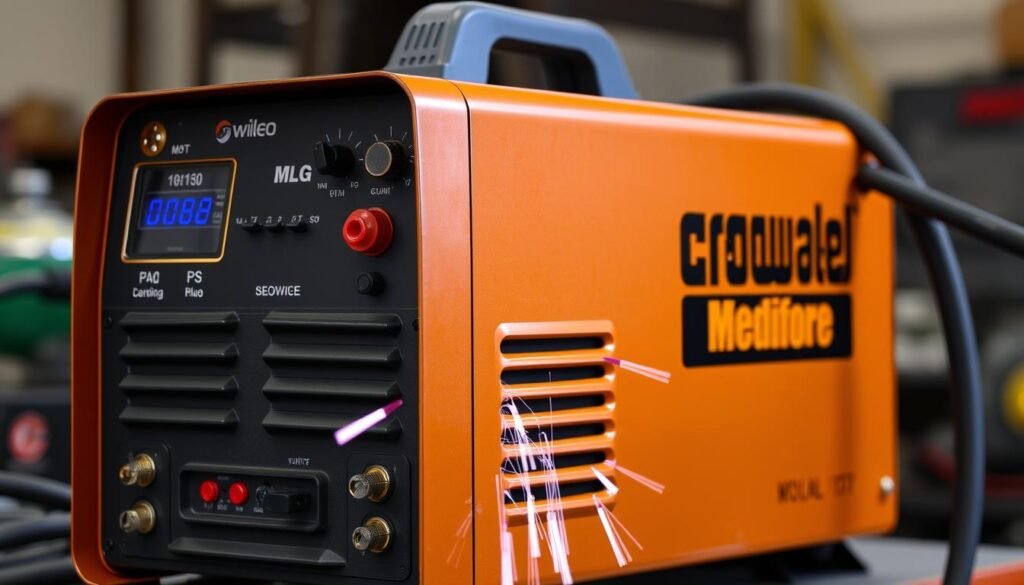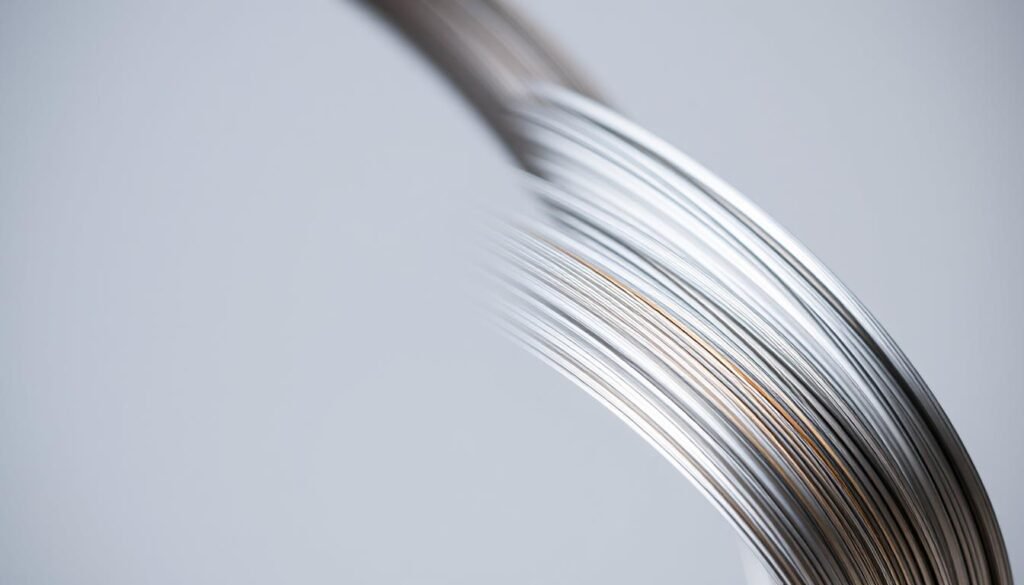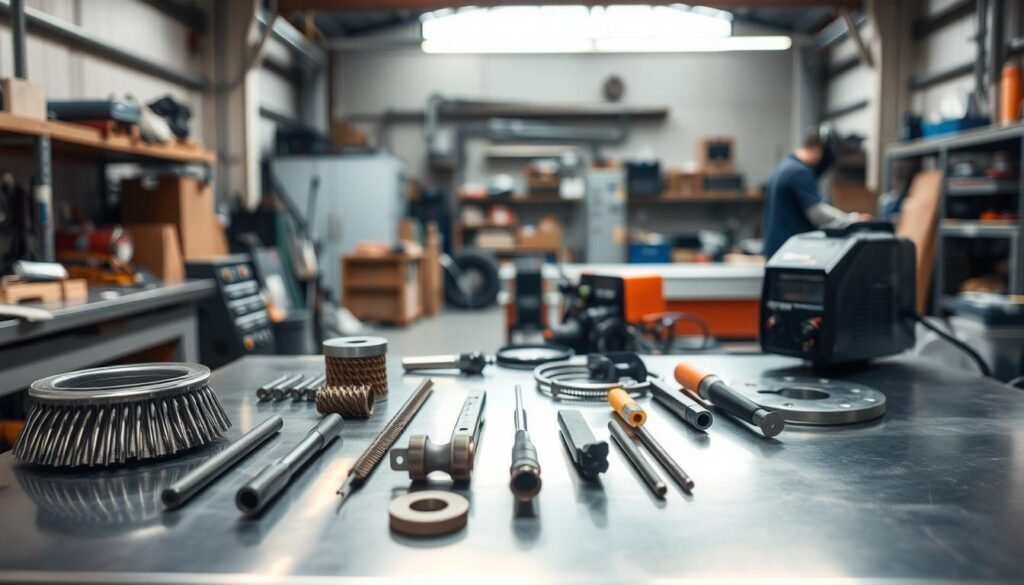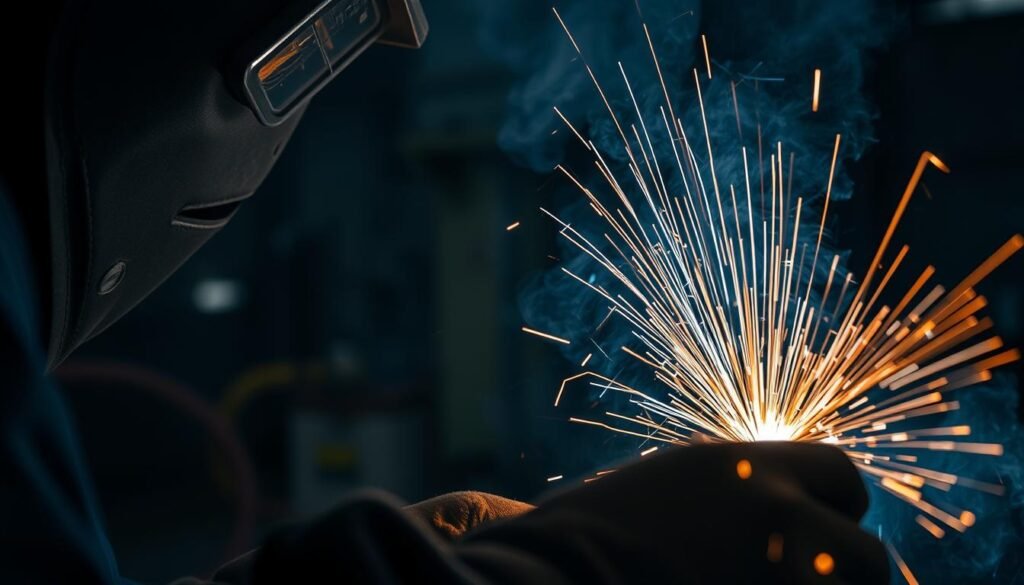Welding stainless steel is a skill that many professionals and hobbyists need to master. While it’s possible to weld this alloy using various methods, including TIG and MMA (stick welding), MIG welding is a popular choice due to its efficiency and versatility.
Stainless steel presents unique challenges when it comes to welding, primarily due to its composition and heat retention properties. To achieve high-quality welds, it’s essential to understand the differences between welding mild steel and stainless steel. This comprehensive guide will explore the essential equipment, techniques, and considerations for successfully MIG welding stainless steel.
Understanding Stainless Steel Properties
To weld stainless steel effectively, it’s essential to comprehend its distinct properties. Stainless steel is a popular material due to its corrosion resistance and durability. However, its characteristics can make welding challenging if not properly understood.
Composition and Types of Stainless Steel
Stainless steel is an alloy primarily composed of steel, carbon, and chromium. The addition of chromium provides its corrosion-resistant properties. There are several types of stainless steel, including austenitic, ferritic, and martensitic, each with different compositions and applications.
Why Stainless Steel Is Challenging to Weld
Unlike mild steel, stainless steel retains more heat and has a greater thermal expansion. This can lead to warping and distortion during welding. The low heat conductivity of stainless steel means that the heat is concentrated in the welded joint and the heat-affected zone (HAZ), potentially causing corrosion issues if not managed properly.
The formation of chromium carbides when stainless steel is overheated can deplete chromium in certain areas, compromising the material’s corrosion resistance. Proper heat management is critical to maintaining the structural integrity and corrosion-resistant properties of the material.
Can You Weld Stainless Steel With A MIG Welder?
Stainless steel can be welded using a MIG welder, provided certain conditions are met. The process requires attention to detail and the right setup to achieve high-quality welds.
The Short Answer: Yes, But With Proper Setup
The short answer to whether you can weld stainless steel with a MIG welder is yes, but it comes with the caveat of proper setup and technique. MIG welding stainless steel is generally considered easier than TIG welding due to its automated wire feeding system, which simplifies the welding process. Proper pre-cleaning, equipment preparation, and shielding are crucial for successful welds.
Advantages and Limitations of MIG Welding Stainless Steel
MIG welding offers several advantages for stainless steel fabrication, including faster deposition rates and an easier learning curve compared to TIG welding. However, it also has limitations, such as less precise heat control, which can be problematic due to stainless steel’s sensitivity to heat input.
- MIG welding provides faster deposition rates and is more suitable for production environments.
- The automated wire feeding system makes it more accessible to beginners.
- Limitations include less precise heat control and potential for chromium carbide precipitation.
By understanding these advantages and limitations, welders can better prepare for the challenges of MIG welding stainless steel.
Essential Equipment for MIG Welding Stainless Steel
The key to effective MIG welding of stainless steel lies in the equipment used. To achieve high-quality welds, it’s crucial to have the right MIG welder, wire, and shielding gas.
MIG Welder Requirements
When searching for the best MIG welder for stainless steel, look for a machine that can handle the specific demands of welding stainless steel. It should have a stable arc and precise control over wire feed speed.

Selecting the Right Wire for Stainless Steel
Choosing the correct wire is vital for stainless steel MIG welding. The wire should match the composition of the stainless steel being welded to maintain its corrosion resistance and mechanical properties.

Shielding Gas Options for Stainless Steel
The choice of shielding gas is critical for MIG welding stainless steel. A “Tri-Mix” gas consisting of 90% helium, 7.5% argon, and 2.5% carbon dioxide is considered the industry standard. This mix provides optimal arc stability and weld quality.
- Shielding gas selection is critical to prevent compromising the weld’s corrosion resistance and mechanical properties.
- The “Tri-Mix” gas is the industry standard for stainless steel MIG welding, offering optimal arc stability and weld quality.
- Avoid using standard 75% argon/25% CO2 mixtures, as they can reduce corrosion resistance.
- Alternative gas mixtures include 98% argon/2% CO2 or argon with 1-2% oxygen.
- Gas flow rates should be around 14-16 liters per minute to ensure adequate shielding.
Setting Up Your MIG Welder for Stainless Steel
MIG welding stainless steel demands precise adjustments to your welder’s settings for superior outcomes. Proper setup is crucial for achieving high-quality welds and preventing common issues such as porosity and oxidation.
Polarity Settings
When MIG welding stainless steel, the polarity setting is critical. Typically, a DC electrode positive (DCEP) polarity is used, as it provides the best balance between penetration and cleanliness.
Wire Feed Speed and Voltage
Adjusting the wire feed speed and voltage is essential for maintaining the correct arc length and ensuring proper penetration. A higher wire feed speed generally requires a corresponding increase in voltage to maintain a stable arc.
Gas Flow Rate Adjustments
The shielding gas flow rate plays a significant role in protecting the weld area from atmospheric contaminants. For stainless steel MIG welding, a gas flow rate of 14-16 LPM is typically recommended.
To further enhance weld quality, consider the following adjustments:
- Increase gas flow rates by 20-30% when welding in drafty conditions or outdoors.
- Maintain a proper work distance between the MIG torch nozzle and the workpiece.
- Use post-flow shielding to protect the weld as it cools.
| Parameter | Recommended Setting | Notes |
|---|---|---|
| Gas Flow Rate | 14-16 LPM | Higher rates for drafty conditions |
| Wire Feed Speed | Varies | Adjust based on voltage and material thickness |
| Voltage | Varies | Adjust to maintain stable arc |
Preparing Stainless Steel for Welding
The success of MIG welding stainless steel hinges on meticulous preparation to prevent contamination and ensure a strong weld. This preparation involves not just the cleaning of the stainless steel surface but also measures to prevent cross-contamination from other materials, particularly mild steel.
Cleaning Requirements for Stainless Steel
Cleaning the stainless steel surface is the first step in preparing it for welding. This involves removing any dirt, oil, or other contaminants that could compromise the weld quality. A dedicated stainless steel brush or a grinding wheel used exclusively for stainless steel is recommended. This ensures that the surface is free from any residues that might affect the welding process.
Preventing Cross-Contamination
Cross-contamination between carbon steel and stainless steel is a significant concern as it can compromise weld quality and corrosion resistance. To prevent this, it’s essential to maintain separate tools for stainless steel work, including wire brushes, grinding wheels, and clamps. Additionally, consider establishing a dedicated workspace for stainless steel welding, isolated from carbon steel fabrication areas. Using a Teflon liner in your MIG gun and dedicating specific equipment for stainless steel applications can further prevent contamination.

To summarize the key considerations for preparing stainless steel for welding, the following table outlines the main factors:
| Preparation Step | Description | Importance |
|---|---|---|
| Cleaning | Remove dirt, oil, and contaminants from the surface | High |
| Dedicated Tools | Use separate tools for stainless steel to prevent cross-contamination | High |
| Workspace Isolation | Isolate stainless steel welding from carbon steel fabrication | Medium |
| Teflon Liner in MIG Gun | Prevent contamination from the wire feed system | Medium |
Step-by-Step Guide to MIG Welding Stainless Steel
Effective MIG welding of stainless steel hinges on understanding the material’s properties and applying the right techniques. Stainless steel’s unique characteristics, such as its high heat retention and expansion, require careful management during the welding process to prevent distortion and ensure strong, corrosion-resistant welds.
Tack Welding Techniques
Tack welding is a critical step in MIG welding stainless steel. It involves making small welds at intervals along the joint to hold the pieces in place. To do this effectively, ensure that the surfaces are clean and properly aligned. Use a low heat input for tack welds to minimize distortion. The tack welds should be made with the same care as the final welds, as they will become part of the overall weld.
Proper Torch Angle and Movement
Maintaining the correct torch angle and movement is vital for achieving high-quality welds. Hold the MIG gun at a consistent angle, typically between 10 to 15 degrees, and move it smoothly along the joint. The movement should be steady and controlled, with a consistent speed that ensures the weld pool is properly formed. This technique helps in managing heat input and preventing distortion in the stainless steel.
Managing Heat Input
Managing heat input is crucial when MIG welding stainless steel. Excessive heat can lead to carbide precipitation, compromising the weld’s corrosion resistance. Monitor the color of the weld and heat-affected zone; straw or light blue colors are acceptable, while dark purple or black indicates excessive heat. Techniques such as intermittent welding, using multiple passes with smaller beads, and employing copper backing bars or heat sinks can help control heat input and reduce distortion.
By following these steps and techniques, welders can achieve high-quality, corrosion-resistant welds on stainless steel components. Proper heat management and technique are key to successful MIG welding of stainless steel.
Common Challenges and Solutions
MIG welding stainless steel presents several challenges that need to be addressed for successful welds. The unique properties of stainless steel, such as its low thermal conductivity and high thermal expansion, can lead to various issues during the welding process.
Preventing Distortion
Distortion is a common problem when welding stainless steel due to its high thermal expansion. To minimize distortion, use proper fixturing and clamping techniques. Maintaining a consistent welding speed and using a sufficient number of tacks can also help.
Avoiding Carbide Precipitation
Carbide precipitation can occur when stainless steel is exposed to high temperatures, leading to a loss of corrosion resistance. To avoid this, use a lower heat input by reducing the welding current and increasing the travel speed. Additionally, consider using a stabilized stainless steel grade.
Dealing with Burn-Through
Burn-through is a risk when welding thin stainless steel sections. To mitigate this, start with lower amperage settings and use proper backing materials like copper or ceramic backing tape. Maintaining a consistent torch movement and slightly faster travel speed can also help prevent burn-through.
- Use pulse MIG technology for better control of heat input.
- Start with lower amperage settings and adjust as needed.
- Maintain a consistent torch movement to prevent dwelling too long in one area.

Advanced Techniques for Professional Results
MIG welding stainless steel to a professional standard involves more than just the basics; it demands advanced techniques. To achieve high-quality welds, understanding and implementing these techniques is crucial.
Purging for High-Quality Welds
Purging is a critical step in achieving high-quality welds on stainless steel, particularly for applications requiring high corrosion resistance. Purging involves removing oxygen from the weld area to prevent oxidation and contamination. This is typically done using an inert gas like argon. Effective purging ensures the weld area remains clean and free from atmospheric gases, resulting in a cleaner, more corrosion-resistant weld.
Post-Weld Treatments
Post-weld treatments are essential for enhancing the quality and appearance of stainless steel welds. Various methods can be employed:
- Mechanical cleaning using stainless steel wire brushes or flap discs to remove surface oxides and discoloration.
- Chemical treatments, such as pickling pastes, to restore the passive chromium oxide layer and remove heat tint.
- Electropolishing to enhance corrosion resistance and create a smooth, reflective surface.
- Stress relieving for structural applications to reduce residual stresses and prevent stress corrosion cracking.
These treatments not only improve the corrosion resistance of the weld but also enhance its appearance, making them particularly valuable for visible or critical applications.
Conclusion
Achieving high-quality welds on stainless steel using a MIG welder is entirely possible with the right guidance. By understanding the unique properties of stainless steel and following proper equipment setup and welding techniques, you can produce professional-quality results. Proper preparation and practice are key to mastering MIG welding stainless steel. With patience and dedication, you can elevate your welding career or enjoy doing DIY projects that look and perform much better than mild steel. This skill can significantly improve the performance and utility of many assemblies.
